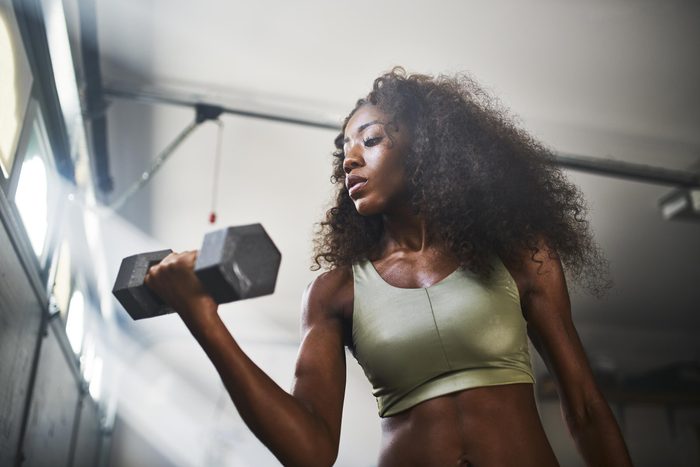
Sweat smarter
One of the main causes of acne on your back and chest is from working out. Tight gym clothes trap sweat and oil close to the skin, which can clog pores and hair follicles and cause back acne breakouts. Change out of your sweaty gym clothes as soon as possible and hit the shower. Use a body wash with benzoyl peroxide or salicylic acid to reduce breakouts and kill bacteria. While benzoyl peroxide can be a beneficial ingredient, know that there are some skincare ingredients that are making you break out.
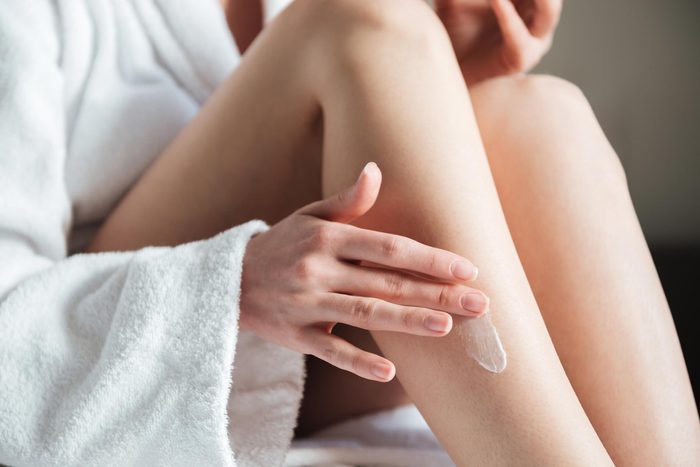
Moisturize lightly
While your facial skin may dry out quickly, especially after showering, other parts of your body don’t require the same amount of moisturizer. Angela Lamb, MD, a dermatologist with Mount Sinai Hospital in New York City, recommends applying moisturizer to your legs and arms, but using a lighter touch on your chest and back. These areas have more oil glands than your extremities, and may not need any extra moisturizer.
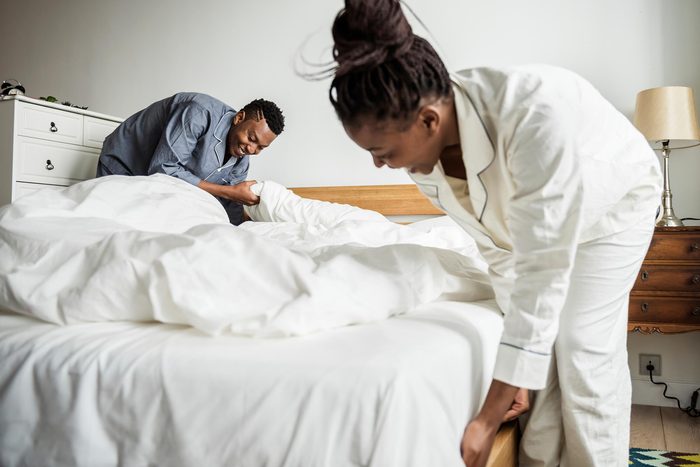
Change your sheets regularly
While you’re sleeping, dead skin cells and body oils rub off on to your sheets. “Built-up oils and bacteria on your sheets may be contributing to your back-ne breakouts,” says Dr. Lamb. To get rid of back acne, she recommends washing sheets weekly to reduce the amount of pore-clogging oils your skin is exposed to. The same goes for towels, bras, and pajamas: If it touches your skin, keep it clean. Here are more things dermatologists say you should never, ever do to your skin.
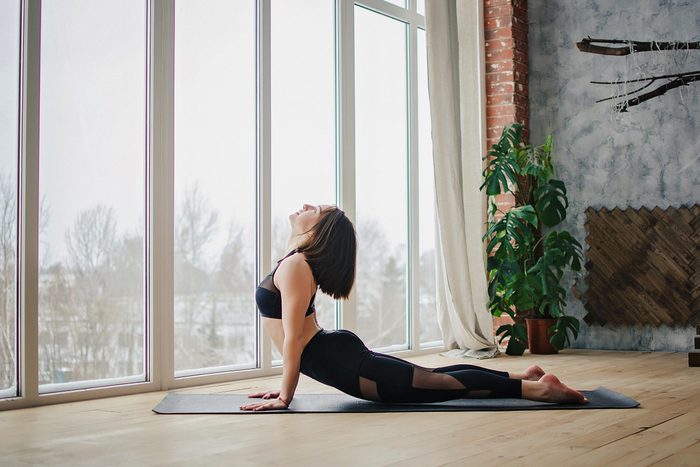
Avoid spandex
Tight-fitting synthetic materials like spandex trap oil and moisture, preventing skin from properly breathing. This causes clogged pores and bad breakouts. If you struggle with body acne or back acne, try switching to breathable cotton clothing, especially while working out. Don’t think it matters? Here’s one woman’s story of how her sweaty workout leggings gave her a skin infection.
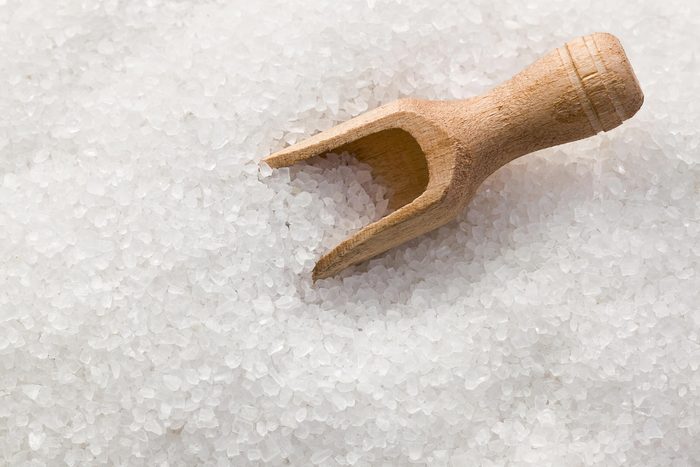
Try a saltwater bath
Epsom salts not only relax your muscles but can also help your skin. By soothing the skin, Epsom salts can help to reduce redness including acne, says Jennifer M. Wong, a registered physician assistant at Advanced Dermatology PC, which has offices in New York and New Jersey. Consider adding one cup of Epsom salts or a half-cup of plain, unflavored oats to your bath water and soak for 20 to 30 minutes.
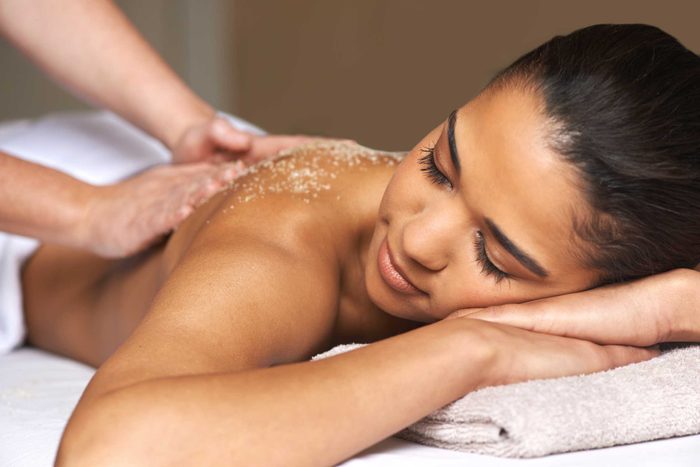
Be an exfoliating pro
Pores on your back are larger and more prone to clogging than pores on your face. It’s a recipe for bacne: Pimples are caused when a mix of dead skin cells and bacteria get trapped in a clogged pore. To get rid of back acne, use a body scrub with salicylic acid two to three times a week to slough off dead skin cells and clear clogged pores. The skin on your back is also not as delicate as the skin on your face, so you might want to give exfoliation a try on your body. Just be sure not to overdo it; recognizing these exfoliating mistakes will help keep your skin in shape.
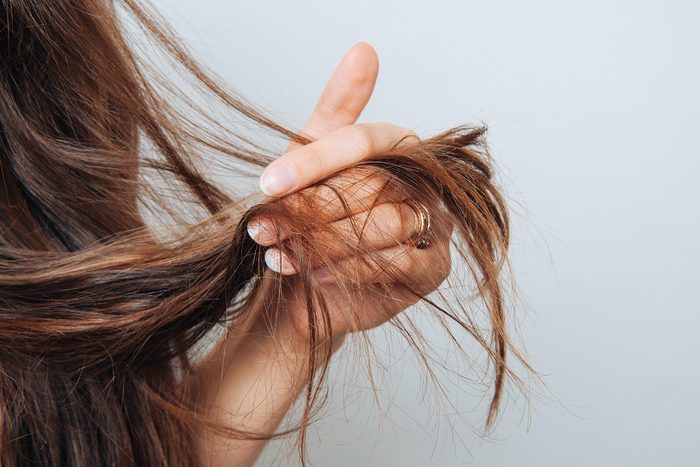
Take care with hair products
Conditioners and other hair products can rub off on your face and back while you’re showing. “When we don’t rinse our back after using shampoo, conditioner, or soap, we leave the chemicals of the soap on our skin,” says Richard Torbeck, MD, a board-certified dermatologist with Advanced Dermatology PC. “When we do that over time, they slowly dry out and irritate the skin.” He explains that this can trigger an allergic reaction, making you more likely to itch and in turn, worsen the irritation. “Acne-like reactions may develop from not rinsing because the irritation can cause folliculitis. This reaction can look similar to acne but is slightly different in the disease process compared to acne.” Additionally, Wong adds that your hair itself may be a culprit of back acne. “Hair bearing areas such as long hair on your back, bangs, and beard hair can cause breakouts due to heat, sweat, and bacteria.”
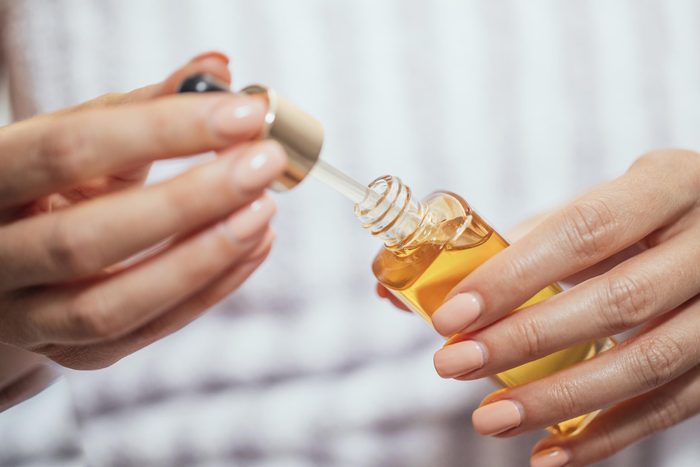
Spot treat with tea-tree oil
This essential oil has strong antibacterial properties that make it a powerful back acne treatment. Information published in a 2017 issue of the Australasian Journal of Dermatology notes that tea tree oil effectively reduced mild to moderate acne. Here’s how to get rid of back acne using tea tree oil: Mix a few drops of the oil with a carrier oil (oil directly on your skin can be irritating) like coconut oil, and gently apply with a cotton ball or swab. Tea tree oil may be a good option if over-the-counter medications aren’t effective for your skin. Turns out, this oil offers many benefits; here are more health and beauty uses for tea tree oil.
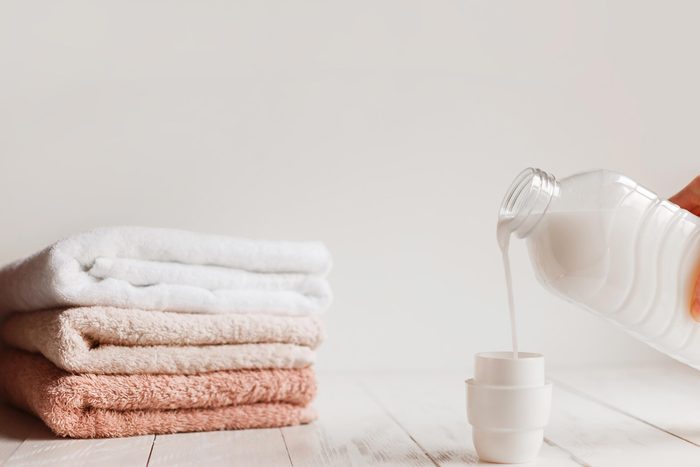
Switch your laundry detergent
Scented products can irritate skin and cause back acne. If you’ve tried acne treatments and your skin still isn’t clearing up, try eliminating scented products such as certain laundry detergents to see if you can find the culprit. “Laundry detergents can worsen acne through irritating the skin by scents and harsh chemicals similar to soaps,” says Dr. Torbeck. He recommends trying unscented detergents like all® free clear or Tide Free & Gentle. Banishing breakouts may also be as simple as replacing your fabric softener. “I do not recommend fabric softener sheets unless they are unscented with low chemical content,” he adds.
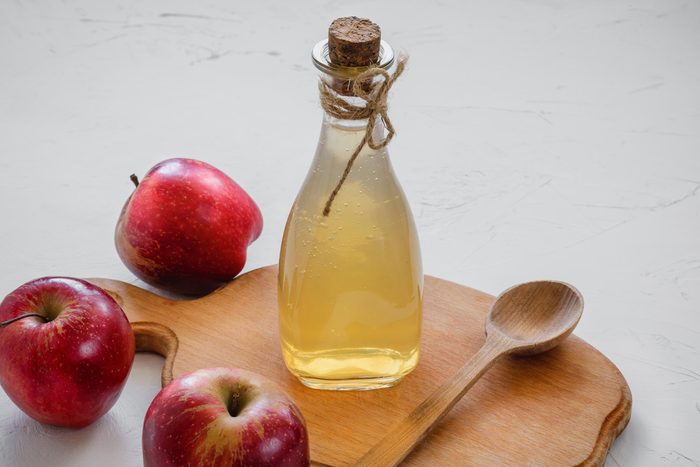
Make an apple cider vinegar toner
Apple cider vinegar (ACV) regulates your skin’s pH, which can lead to clearer skin while drying out problematic oily spots and blemishes. Create a toner by combining one part apple cider vinegar to two parts water in a spray bottle. For a back acne treatment, spray on breakouts or dab with a cotton ball every night before bed. Adding apple cider vinegar to your diet can also help with your skin. Dilute one to two tablespoons in a glass of water and drink daily. If you’re not a fan of apple cider vinegar, look for a body wash that balances the pH of your skin.

Watch your diet
The American Academy of Dermatology has found that the food you eat can have an effect on your complexion. Try to avoid or cut down on foods with a high glycemic index, like white bread and potatoes because they cause your blood sugar to spike. The academy also suggests cutting back on dairy products. What should you eat: Fruits, vegetables, and whole grains. For more about how to get rid of back acne with your diet, learn even about which foods help clear acne and which foods cause it.
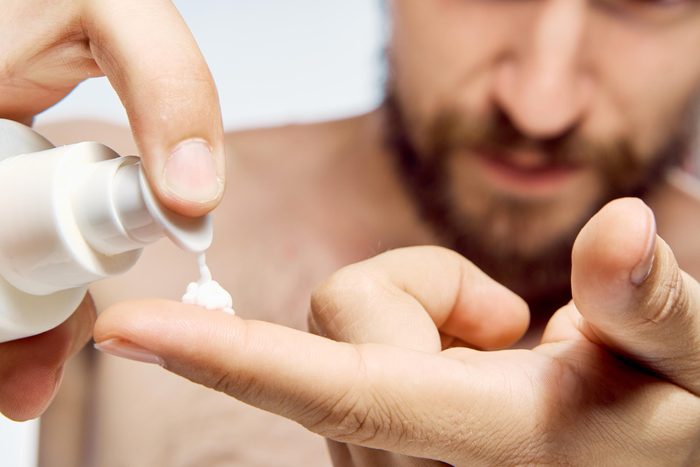
Keep an eye on your skin care
Any number of the things you’re putting on your skin could be causing back acne. If you’re using harsh or scented soaps or particularly oily sunscreens, you should consider switching out those products. Try unscented items, gentler options, and assessing any unnecessary vigorous scrubbing. If you want to try items you already have at home, check out these dermatologist-approved DIY skin care treatments.
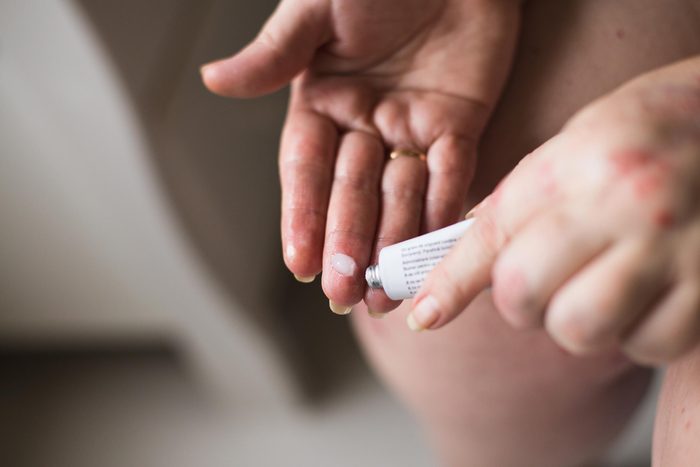
Try acne-fighting products
Of course, one of the best solutions for how to get rid of back acne may be to actually invest in products that target and clear up acne. Try out Differin Gel, which is the first FDA-approved over-the-counter retinoid to treat acne. If you prefer a spray, Replenix may work as a helpful post-workout acne fighter.